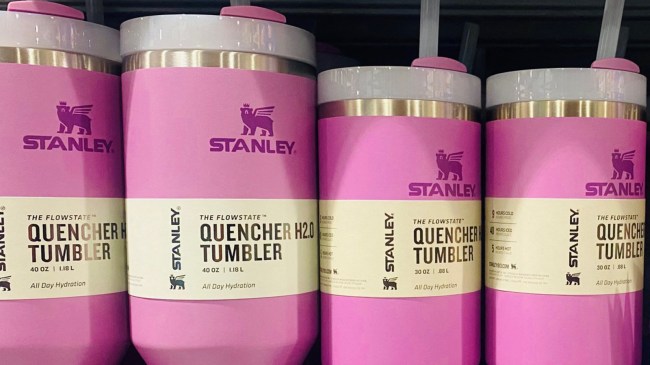Getty Image
It’s been impossible to ignore the hype surrounding the uber-popular Stanley cups, but one woman who tested them for lead after a recent revelation came forward with a concerning claim that doesn’t seem to stand up to much scrutiny.
The folks behind the insulated Quencher tumblers that most people simply refer to as “Stanley cups” have been producing the 40 oz. containers since 2016, but they’ve had A Moment over the past year or so thanks to the legion of diehard fans responsible for the cult-like following they’ve managed to amass.
At first glance, it seemed like the only real “danger” you faced if you hopped aboard the Stanley cup bandwagon was being trampled in some of the stampedes that formed courtesy of people who injected some serious Black Friday energy into the release of a limited-edition collaboration between Target and Starbucks.
However, earlier this month, plenty of people were surprised to learn about a potential pitfall in the form of the lead pellets that are harnessed to insulate the cups.
While the health risks that come with ingesting lead are very well documented, Stanley was quick to minimize the concerns about potential contamination by noting the pellets are housed between the exterior and the vessel used to store liquid.
It subsequently asserted the only way you could be exposed to the toxic substance is by sipping from the cup if its interior managed to become dislodged, which makes a claim that recently surfaced on Facebook particularly perplexing.
Last week, a self-described “stay-at-home Mommy and wife” named Stephanie Flannery hopped on the platform to share the results of the experiment she conducted with the help of the lead test swabs she ordered on Amazon after learning Stanley Cups contain the substance.
According to her post, she swabbed the interior of a Stanley cup in addition to those produced by Rtic and Yeti, alleging “the Yeti and Rtic remained yellow resulting in a negative for lead” while “every single Stanley I own showed positive for lead.”
However, it didn’t take long for people to question the validity of the results. The “positive” swab in question was clearly a different shade of color than the negative ones, but people noted it would’ve turned a shade of red of magenta (as opposed to dark grey) if lead had actually been detected.
When you consider there’s no feasible way for lead to enter the interior of the cup unless the steel container was punctured (a virtually impossible task), it sure seems like this is just another example of someone making something up for internet clout.

